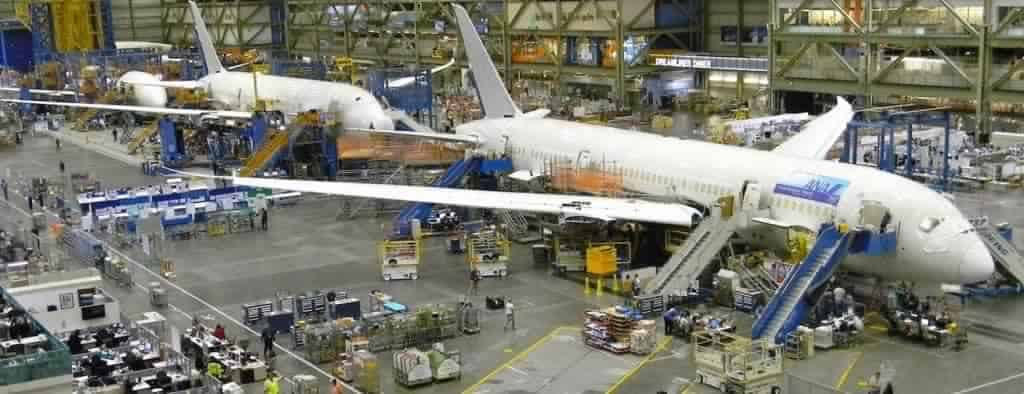Did you know there are 2.3 million parts required to assemble a Boeing 787 Dreamliner? Understanding how Boeing manages this process is fascinating: They start by neatly organizing a bunch of components on one end of the shop floor, and a few weeks later, the plane is wheeled out to the runway and takes flight.
I actually witnessed Dreamliners being built first hand at Boeing’s plant in South Carolina, when I worked in management consulting, and my company was hired to look at ways to improve their assembly process.
One thing became apparent while I worked on that project, Boeing’s customers dictated how the company designs its manufacturing process. Although I’m sure Boeing would prefer – from a cost perspective – to build every plane the exact same way, the reality is each airline has different requirements. Boeing needed to talk to its customers to understand what they valued most when they purchase $140M aircraft. The company designed a process with some standard steps (e.g. every plane will have the same 2 wings), and some steps that allow for customization, depending on customer needs (e.g. how the seats are arranged).
The way Boeing thinks about its manufacturing process is the same way we want to think about designing a sales process.
Opportunity stages should be based on your customer’s buying process first, and then, on how your sales team can aid customers through their buying process.
For example, most sales teams are using Salesforce’s out-of-the-box set of Opportunity Stages without realizing the negative impact those stages can have on pipeline metrics and revenue targets. The teams that decide to rename the stages often base them on their own sales process, which is also a mistake. Opportunity stages should be based first, on your customer’s buying process, and then, on how your sales team can aid customers through their buying process.
Eliminate waste in the sales process
It’s just as important to map out and understand your customer’s buying process as it is to make certain you understand what your prospect needs at each step. When AEs attempt to tie everything back to their own sales process, they’ll put more emphasis on moving an opportunity through a stage, rather than making sure they’ve given the customer what they need at each step.
In the manufacturing world, it’s best to inspect a product at the beginning and middle of its assembly, not just at the very end. If an item isn’t inspected until it’s nearly or fully assembled, and a defect is spotted, the rework is far costlier and time consuming than if the defect were addressed earlier. Andy Grove covers this concept in his book, High Output Management, when he says you always want to reject material at its lowest value stage.
The same principle applies to a sales process. If the sales process is designed to support your customer in their buying process, then a thorough discovery phase will occur early. Your customer benefits by feeling like they’re working with a strategic partner who wants to understand their needs rather than rush them through a demo. Your sales team benefits by only investing time and energy into prospects who are truly qualified. If an AE loses an opportunity after a month-long sales cycle, and it’s because the buyer wasn’t really qualified, that’s time they could have spent engaging more qualified buyers they might have closed.
MBOs actually align with company goals
If you base your stages on your own sales process, then you may be wasting valuable time and energy on steps that your customers don’t care about.
If your first stage is “Demo,” and management believes that demos are a leading indicator of future closed business, then the sales team will soon be under pressure to complete more demos every week. Some AEs will naturally want to get as many prospects as they can through the demo stage, and they might rush or skip the discovery stage altogether. The number of demos may increase, but the rate of sales conversions may be unaffected, if a demo isn’t the first part of your customer’s buying process.
Talk to your customers to understand how they buy solutions in your category. What information do your AEs need to give prospects, and what information do they need to derive from prospects in order to be most helpful at every step? Only when your opportunity stages are primarily based on how to help customers should you encourage certain activities (e.g. run a contest on discovery calls held instead of demo’s completed).
Conclusion
Redefining opportunity stages in Salesforce doesn’t seem like a strategic initiative on its surface, but it can positively impact more areas of your business than you may expect. Your customers will view your sales team as helpful partners who want to help them meet their goals. Sales leadership can be more confident that the activities they’re pushing the team to complete are going to drive the business in the right direction. The operations team can deliver more accurate forecasts, because the sales process is universally defined, and every stage means the same thing to everyone in the organization. Lastly, your AEs can sell against a proven process and spend more time helping the right prospects progress through their buying journey.




